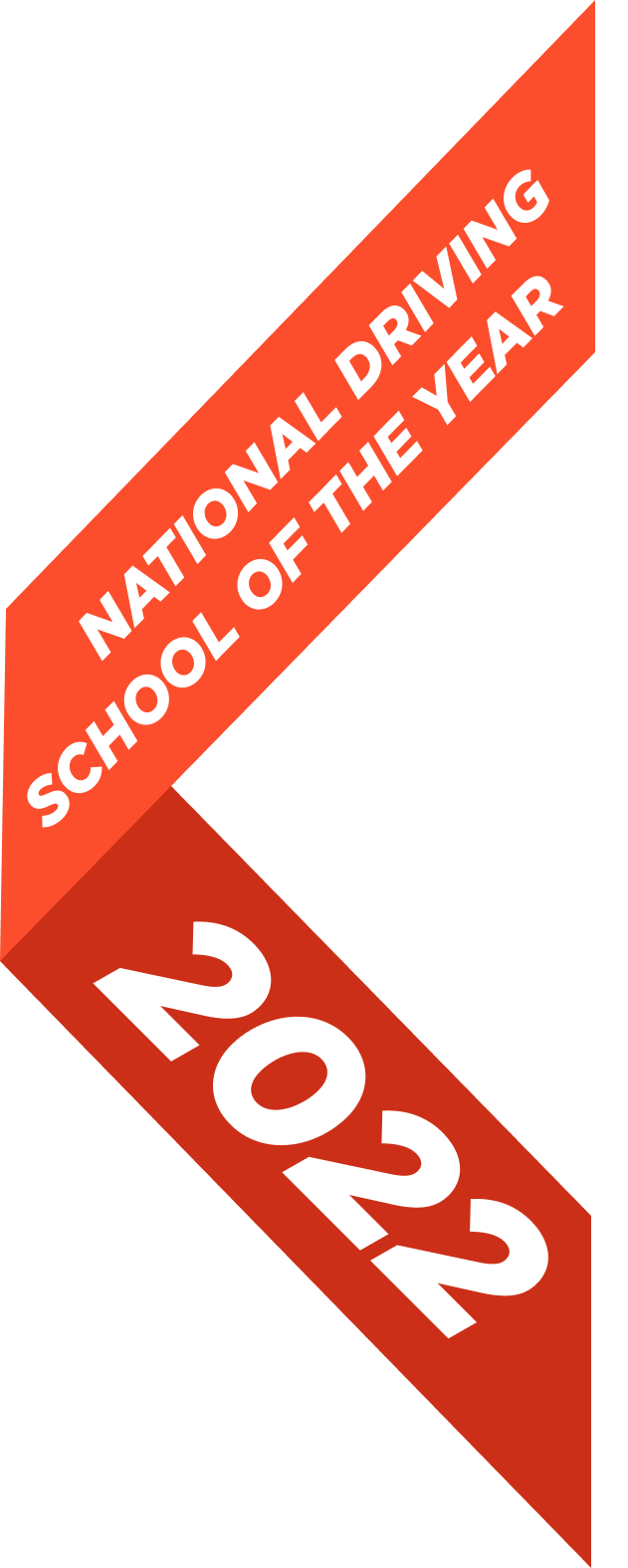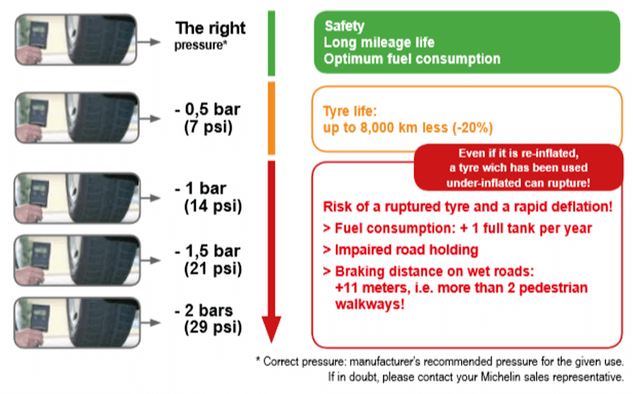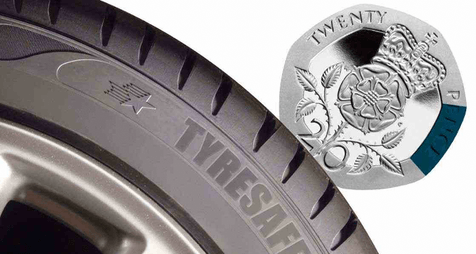


When your tyres are maintained well, they typically last longer and respond better to your car’s steering and braking. However, having the wrong pressure in your tyres can make driving dangerous. Under inflated tyres can lead to poor braking, as well as affecting the handling of your vehicle while you’re driving. It also increases the likelihood of punctures and tyre damage. You can find your recommend tyre pressure in the manufacturers guide and should check using a reliable pressure gauge when the tyres are cold.
It is recommended that you check you tyre pressure monthly; a correctly inflated tyre improves safety, lasts longer and rolls more easily (saving fuel and reducing your running costs). Using less fuel reduces CO2 emissions.
There are different types of tyre with different structures. The most common is a radial tyre where the carcass cords are arranged at 90 degrees to the direction of travel, or radially (from the centre of the tyre), allowing for excellent ride and support for the tread band. The cross ply tyre consists of numerous carcass layers placed diagonally across each other in the tread and the sidewalls, at an angle.
Cross ply tyres have significantly different characteristics to radials and will generally not be available for your car.
Even radial tyres differ in performance depending on type and it is important to make sure you do not mix different types of tyre on the same axle and that you always maintain the best grip at the rear of the vehicle for stability in poor weather conditions.

Another crucial inspection to make is the tyre tread depth. The minimum tread depth is 1.6mm across the central three-quarters of the breadth of the tyre, and around the entire outer circumference of the tyre. This can sound quite daunting but here’s a handy tip – you can measure your tread depth using the 20p test! Place a 20p coin inside the main tread groove of the tyre. If the outer band of the 20p piece is obscured by the tyre then your tyres have adequate tread. If you can see the outer band of the 20p piece your tyres could be approaching the legal limit so it’s advised to have them checked as soon as possible.
Tyre damage including cuts and deformations can be caused by an accidental impact between for example the tyre and a kerb, pothole or an object in the road. If your tyre develops any of these conditions it is important to have the tyre checked by a tyre specialist as quickly as possible. If left untreated this sort of damage could develop over time and result in a sudden tyre rupture.
Vehicle geometry can also have an effect on tyre wear, incorrect geometry also known as mis – alignment can be caused by uneven road surfaces, potholes, speed bumps and can result in irregular tyre wear, this is often rapid and causes excessive fuel consumption and your vehicles handling may feel different.
It is always recommended to have your tyres checked by a trained expert if your vehicle has been involved in an emergency manoeuvre (such as an emergency stop), if a tyre has sustained an impact, if there are any changes in feel such as heavy steering, pull left or right, or if there is a tyre noise or vibration.
With so many tyre safety factors to consider things can get confusing at times. If you have any questions about tyre care, or any concerns about tyre damage or the condition of your tyres, Kwik Fit offers a free tyre safety check carried out by trained experts. Book online for your free tyre check, or contact your nearest centre for more information.